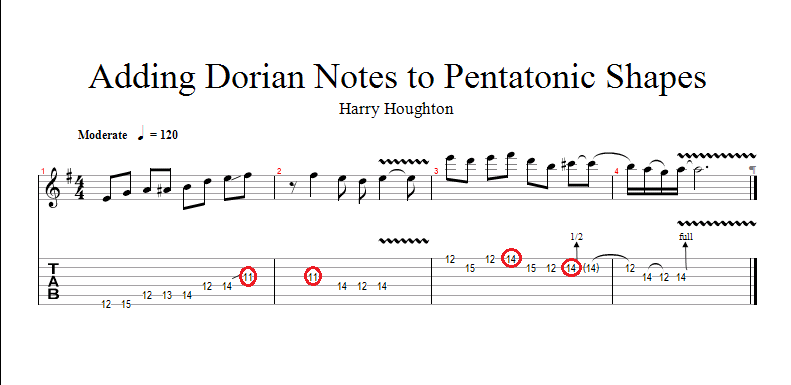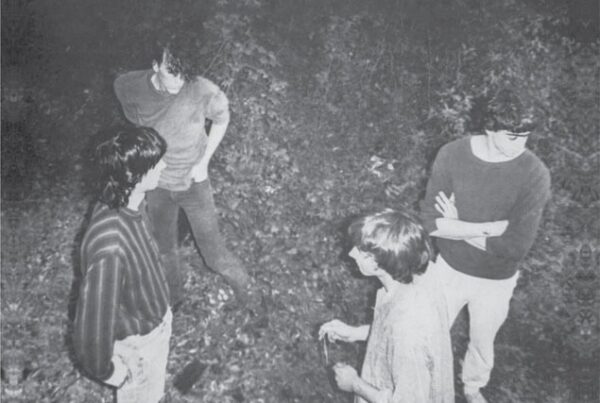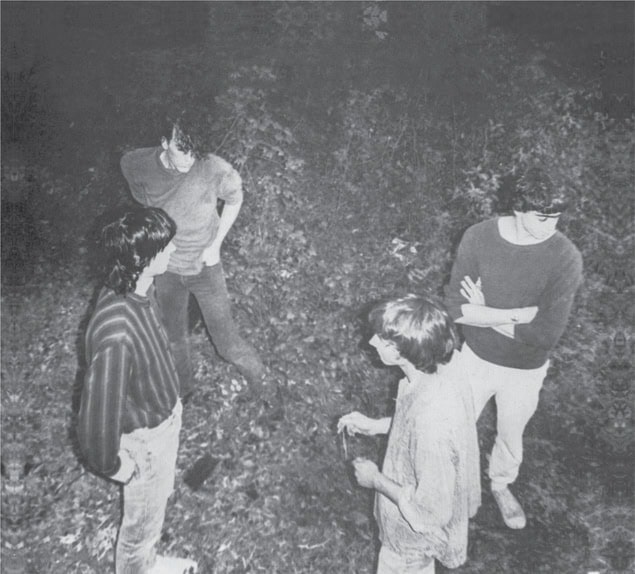
Guitar Licks, Tips and Tricks by Harry Houghton:
Lesson two Adding Dorian Notes to Pentatonic Shapes
In this lesson, we will explore adding notes from the Dorian mode to the minor pentatonic shapes with blues notes from the last lesson. The easiest way to think about playing Dorian licks is to simply add two notes to your minor pentatonic shapes. This example is in the key of E and the notes we add to the scale are F# and C#, which from our root note of E are a major second and major sixth interval respectively. In the E natural minor scale we would normally have the F# note, but the inclusion of the C# (a major sixth) as opposed to the C (a minor sixth) gives us a slightly different flavour and is great for jazzing up your blues licks. I have highlighted these notes in the accompanying tab.

The first part of the lick begins by going up the pentatonic scale starting at the twelfth fret on the low E string to the octave at the fourteenth fret of the D string and includes the B flat blues note at the thirteenth fret of the A string. From here we slide into the F# at the eleventh fret of the G string twice, before going back to the E at the fourteenth fret of the D string, down the D at the twelth fret and back up to the E again. The F# is the first note we have used outside the pentatonic scale and should sound quite jazzy.
The second part starts with some Hendrix-esque phrasing at the twelth fret on the top E string, then down the D at the fifteenth fret of the B string. We then go back to the E and then up to F#, this time at the fourteenth fret of the high E string, before heading down to the D on the fifteenth fret of the B string and then to the B at the twelfth fret. We then use our other Dorian note C# to bend up from the fourteenth fret of the B string, a semitone to D and back down again before pulling off to the B at the twelfth fret, and then pulling off from the A at the fourteenth fret of the G string down to the G at the twelfth fret before finally bending up a tone from A at the fourteenth fret to B, and add plenty of vibrato! As with the previous lesson, learning how to add these notes to all 5 of your pentatonic shapes is an easy way to add new notes to some very simple shapes.
Sign up to Polyphoneek.com to get the latest industry news, events and opportunities. follow us on twitter @polyphoneek and Facebook: fb.com/polyphoneek.
Follow Harry here on Youtube and subscribe to him on Youtube.






